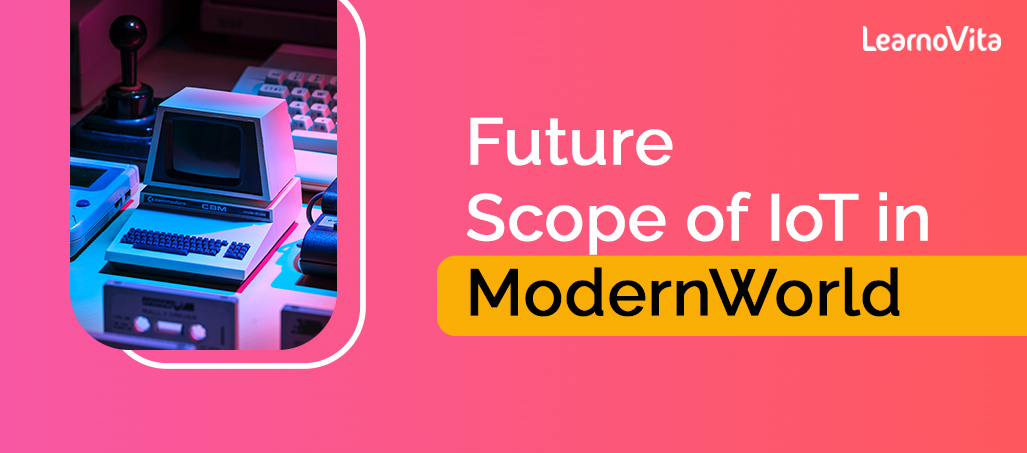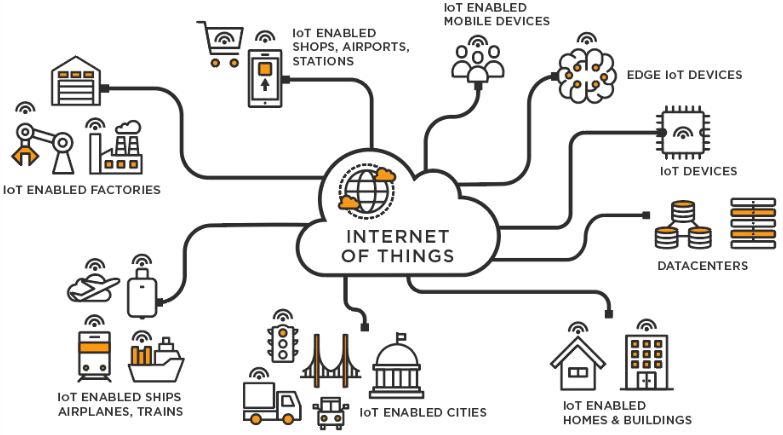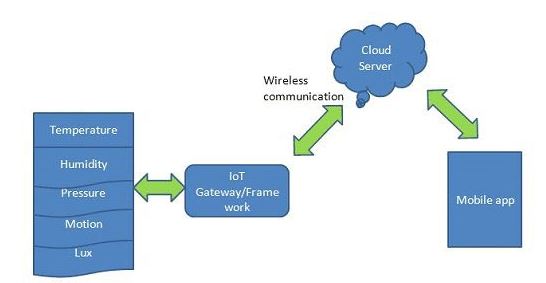- Professional Scrum Master Salary | Everything You Need to Know [ OverView ]
- What is Google Cloud Certification Path (GCP)? | Comprehensive Guide [ Explained ]
- Top Career Opportunities | Read this article to know more
- Top Automation Companies| Expert’s Top Picks
- All about SAP Course Know about the fees
- What is White Collar Job?
- Must-Know [LATEST] NLP Interview Questions and Answers
- Types of Influencers | Use to Improve Your Marketing | All you need to know
- Future Work in 2030 – Exciting Career Options
- Top 10 Online Courses in India [ Job & Future ]
- Future Scope of IoT (Internet of Things) in Modern World
- Characteristics Of Complexity Tables, General System and FPA
- The Most In-demand and Highest Paying Jobs in Australia 2020
- Why is Career Exploration important?
- Tips for Women Returning to Work After a Career Gap
- The Importance of Security Awareness
- Incredible Examples of Successful Rebranding
- Top Skills that Boosts Java Developer Salaries
- Why E-Learning?
- Hash in Python
- Professional Scrum Master Salary | Everything You Need to Know [ OverView ]
- What is Google Cloud Certification Path (GCP)? | Comprehensive Guide [ Explained ]
- Top Career Opportunities | Read this article to know more
- Top Automation Companies| Expert’s Top Picks
- All about SAP Course Know about the fees
- What is White Collar Job?
- Must-Know [LATEST] NLP Interview Questions and Answers
- Types of Influencers | Use to Improve Your Marketing | All you need to know
- Future Work in 2030 – Exciting Career Options
- Top 10 Online Courses in India [ Job & Future ]
- Future Scope of IoT (Internet of Things) in Modern World
- Characteristics Of Complexity Tables, General System and FPA
- The Most In-demand and Highest Paying Jobs in Australia 2020
- Why is Career Exploration important?
- Tips for Women Returning to Work After a Career Gap
- The Importance of Security Awareness
- Incredible Examples of Successful Rebranding
- Top Skills that Boosts Java Developer Salaries
- Why E-Learning?
- Hash in Python

Future Scope of IoT (Internet of Things) in Modern World
Last updated on 27th Oct 2022, Artciles, Blog, Trending
- In this article you will get
- 1.Introduction
- 2.What is the Internet of Things?
- 3.Why is the Internet of Things (IoT) necessary?
- 4.How does IoT work?
- 5.Future Scope of IoT
- 6.Scope of IoT in the Automobile Industry
- 7.Possibilities in IoT
- 8.The implication of IoT in healthcare
- 9.Potential of IoT in Agriculture
- 10.Conclusion
Introduction
We currently reside in a digitally and technologically advanced environment. The Internet of Things (IoT) is one of these technological advances. Future IoT applications will make the planet a more intelligent place to live. In this blog on the future scope of IoT, we will examine the many Internet of Things application areas and how they will impact our way of life.

What is the Internet of Things?
The Internet of Things (IoT) is a network of interconnected objects, including sensors, electronic equipment, and cameras, among others. They are programmed so that the Internet of Things delivers automation for connected devices. Smart TVs, refrigerators, and air conditioners are everyday Internet of Things (IoT) products that we encounter and utilize frequently. We only need to provide commands to these gadgets via the application on our smartphones. In addition, we use numerous wearable Internet of Things gadgets, such as smartwatches and wristbands that display our heartbeat, blood pressure, and distance walked. All of this is feasible by intelligently combining technologies and equipment into an IoT device. In addition, the future potential of IoT has expanded significantly as a result of breakthroughs in AI and machine learning. IoT’s promise is not restricted to healthcare alone. There are plenty of further IoT uses. In this blog, we will cover the future applications of the Internet of Things in agriculture, healthcare, the automobile industry, and industry. Let’s now explore the necessity of IoT.
Why is the Internet of Things (IoT) necessary?
Have you ever forgotten to turn off your air conditioner, fan, or light before leaving for the store and felt helpless since you couldn’t come home to do so? Here is where IoT enters the picture. It can remind you of tasks that you frequently forget to complete. Using the mobile application, you can also access your IoT-integrated home appliances from anywhere in the globe.
These rings serve a variety of purposes. They are rings composed of network connectivity, NFC chips, and sensors that facilitate data sharing. NFC rings allow you to pay your bills, unlock your car’s door with a simple swipe, and receive mobile notifications.
All of this is made possible by connecting IoT devices to Internet servers, which facilitates the sharing and exchange of data. This technique reduces human labor and saves considerable time.
How does IoT work?
The Internet of Things consists of intelligent electronic gadgets, local area networks, the Internet, cloud servers, and user applications. An Internet of Things device connects over a local network. Then, it transmits information to cloud servers through the Internet. In addition, the cloud servers provide the end-user application’s data or information to the IoT device. This information exchange is a two-way communication that aids in the operation of the IoT system.
Future Scope of IoT
The Internet of Things has developed as a leading global technology. It has garnered immense popularity in a short period of time. In addition, advances in Artificial Intelligence and Machine Learning have made IoT device automation simple. Essentially, AI and ML applications are integrated with IoT devices to automate them. As a result, IoT has broadened its use across numerous industries. This section will cover the applications and future potential of the Internet of Things in the healthcare, automotive, and agriculture industries.

Scope of IoT in the Automobile Industry
The value of Things is transforming the automobile industry in the twenty-first century. One of the most important uses is the production of self-driving automobiles, which has revolutionized industry trends. Engineers created self-driving automobiles to reduce human error and ensure a smooth trip. Numerous companies, including Google, Tesla, Mercedes-Benz, Volvo, Audi, and others, are in the process of developing autonomous vehicles. These self-driving vehicles are equipped with knowledge of Science, artificial intelligence, deep learning, and the web of things. IoT computers are configured to aid in the development of an infrastructure for autonomous self-driving vehicles.
You must enter your residence and destination while operating these automobiles. The navigator then assists in discovering the objective and searches for the fastest route. Then, IoT-based HD cameras collect images of the environment and transmit the data to AI-based systems. These technologies evaluate and visualize environmental data and govern autonomous vehicles’ behavior accordingly. In reaction to traffic and congestion, IoT-enabled speed controls help regulate the speed of these automobiles. However, the Internet of Things is transforming the automotive industry’s patterns.
Possibilities in IoT
As a developing nation, India has enormous IoT potential. According to Naukri.com, India’s future IoT potential is substantial, with 117,114 job openings for IoT developers. In comparison, the demand for an IoT developer has increased by over 300 percent in the United States.
As most people are aware, IoT systems are now pre-installed on all modern computers. IoT embraces a brighter future than it does. Take a quick look at the graph below to visualize the number of available IoT Developer roles over time.
IoT devices are wireless sensors, software, actuators, and laptops. They are attached to a specific object that traverses the net.
IoT Gateway: An IoT gateway is a tool or code program that serves as a link between the cloud and many IoT devices.
Network: The network is the connecting element that links a variety of IoT gateways to the cloud platform via an aging TCP/IP network.
Cloud: The cloud could be a platform that accepts enormous volumes of created data. They receive them via IoT gateways, which connect to a multitude of devices.
Applications: Information synthesized for the highest user to draw crucial insights. The application often offers the user an interface (UI).
The implication of IoT in healthcare
This section will examine the future of IoT within the healthcare industry. The Internet of Things has proven to be one of the most beneficial technologies in the healthcare sector. It facilitates the delivery of specialized medical care to patients, physicians, and researchers. Available services include accurate diagnosis, wearable gadgets for chasing health, patient engagement, and a number of others. In addition, IoT technologies have alleviated unnecessary strain on the healthcare system.
On a secure network, healthcare gadgets will transmit physicians’ and patients’ health information. This allows physicians to diagnose distant patients.
The health care industry can benefit from IoT for a number of reasons, including those listed below.
1.Treatments by minimizing errors: There’s a discount in human errors in patient identification thanks to IoT devices. As a result, patients can receive quick care. Moreover, compared to manual diagnosis, 24/7 device diagnostics provide a sharper picture of patients’ health.
2.Price reduction in treatments: In addition to alternative medical expenditures, manual diagnosis takes time and requires the use of a range of pricey equipment. In addition to alternative medical costs, manual classification requires time and a variety of costly equipment. Using IoT modules, we are able to reduce these expenses. Besides, since patients may be diagnosed at their numerous locations, hospital fees and congestion might be avoided.
3.Accessibility of specialists in remote areas: The Internet of Things solves one of the most significant problems in the health care industry: the scarcity of doctors, particularly specialists, in rural areas. The Internet of Things now makes it possible for patients to be cared for in the absence of physicians. The only requirement for patients is that they wear the gadget. The computer would subsequently provide all pertinent information regarding the patients’ health to the appropriate doctors for analysis. In this approach, the Internet of Things assists the health care industry in providing necessary services to those in need.
Potential of IoT in Agriculture
Food is one of the three fundamental human necessities. We tend to farm in order to meet the demand for food. However, as the world’s population increases, the agricultural industry faces numerous obstacles. Changes in climate and environment have a significant impact on the agriculture industry. To increase efficiency and meet the rising demand for food, the sector has resorted to technology. It includes precision agriculture, agricultural drones, and useful farming applications. All of this can be implemented atop a framework for the Internet of Things.
Precision agriculture: data and communication In agriculture, technology may be a tool for intelligent farming. IoT-enabled devices are used to monitor agricultural areas. The technology uses sensors to monitor soil moisture, humidity, and temperature. It also facilitates the efficient use of water through the use of an automatic watering system. Precision farming enables farmers to keep track of their crops and boost their output.
Agriculture and farming drones are one of the most successful Internet of Things applications. They are accustomed to making agricultural procedures more efficient. With the use of drones, it is easier to evaluate the health of crops. All of this is made possible by IoT-based gadgets used to manufacture agricultural drones.
Greenhouse farming is used by farmers to increase crop yield. In greenhouse farming, environmental parameters that influence crop growth are monitored by manual intervention. On the other side, manually controlling the process for crop development is less productive. The Internet of Things (IoT) and technical advancements have led to the development of greenhouses equipped with sensors, climate controls, and other devices.
These Internet of Things devices aid in the measurement of a variety of environmental parameters below plant needs. Due to the fact that all sensors and gadgets connect via the Internet, they provide reliable information about the present state of the environment.
Conclusion
The long term of IoT is merely endless owing to breakthroughs in technology, and customers wish to integrate equipment like good phones with unit machines. A networking and property protocol has made it possible to link individuals and machines across all platforms. Additionally, the majority of information flows between devices. Security is an additional major worry that must be solved to keep up with demand. From a person’s standpoint, IoT presents fantastic employment opportunities that must be managed. But you have to have the skill that makes you the essential person.